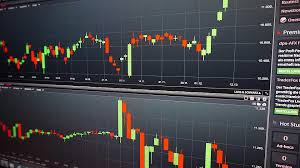The Forex market, also known as the foreign exchange market, represents the largest and most liquid financial market globally, boasting a daily trading volume exceeding $6 trillion. It serves as the backbone of international trade and finance, facilitating the exchange of currencies between countries, businesses, investors, and speculators. This article aims to provide a comprehensive overview of the forex market, covering its structure, key participants, factors influencing currency movements, and essential trading strategies.
Understanding the Structure of the Forex Market
The forex market operates as a decentralized network of banks, financial institutions, brokers, corporations, hedge funds, and individual traders. It spans major financial centers across different time zones, including London, New York, Tokyo, and Sydney, ensuring continuous trading 24 hours a day, five days a week. Currencies are traded in pairs, such as EUR/USD (Euro/US Dollar) or USD/JPY (US Dollar/Japanese Yen), with exchange rates determined by market supply and demand dynamics.
Key Participants in the Forex Market
Several key participants drive liquidity and activity in the forex market:
1. Commercial Banks: Banks play a crucial role in the forex market by facilitating currency transactions for clients, managing currency risks, and providing liquidity. They also engage in proprietary trading to profit from currency fluctuations.
2. Central Banks: Central banks influence the forex market through monetary policy decisions, interest rate adjustments, and currency interventions aimed at maintaining economic stability and controlling inflation.
3. Hedge Funds and Institutional Investors: Hedge funds, institutional investors, and large corporations participate in forex trading to hedge currency risks, speculate on currency movements, and diversify investment portfolios.
4. Retail Traders: Individual investors, or retail traders, access the forex market through online trading platforms provided by brokerage firms. Retail traders engage in speculative trading to profit from currency fluctuations using various strategies and tools.
Factors Influencing Currency Movements
Several factors impact currency prices in the forex market:
1. Economic Indicators: Key economic data releases, such as GDP growth, inflation rates, employment figures, and trade balances, influence currency valuations. Positive economic data generally strengthens a currency, while negative data may lead to depreciation.
2. Geopolitical Events: Political instability, elections, trade disputes, and geopolitical tensions can create uncertainty and volatility in the forex market, affecting currency prices and investor sentiment.
3. Interest Rates: Central banks’ monetary policy decisions regarding interest rates significantly influence currency values. Higher interest rates attract foreign investment, bolstering the currency, while lower rates may lead to currency depreciation.
Trading Strategies in the Forex Market
Successful trading in the forex market involves employing effective strategies tailored to market conditions:
1. Technical Analysis: Traders use technical indicators, chart patterns, and statistical tools to analyze historical price data and identify potential entry and exit points. Popular technical indicators include moving averages, Fibonacci retracements, and RSI (Relative Strength Index).
2. Fundamental Analysis: Fundamental analysts assess economic data, geopolitical events, and central bank policies to evaluate currency valuations. Understanding macroeconomic trends and market sentiment is crucial for making informed trading decisions.
3. Risk Management: Managing risk is paramount in forex trading to protect capital and minimize losses. Traders employ risk management techniques such as setting stop-loss orders, diversifying portfolios, and adjusting position sizes to manage exposure effectively.
Conclusion
The forex market presents diverse opportunities for traders to profit from currency fluctuations and global economic trends. Understanding its structure, key participants, influencing factors, and trading strategies is essential for navigating this dynamic market successfully. With disciplined trading practices, continuous learning, and strategic decision-making, traders can harness the potential of the forex market to achieve their financial goals amidst the ever-changing landscape of international currencies.
